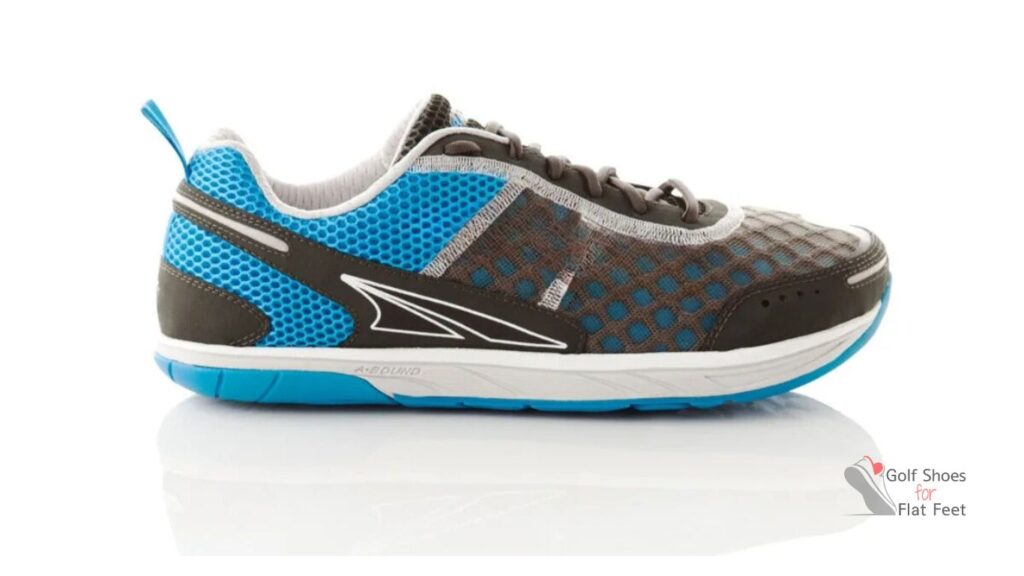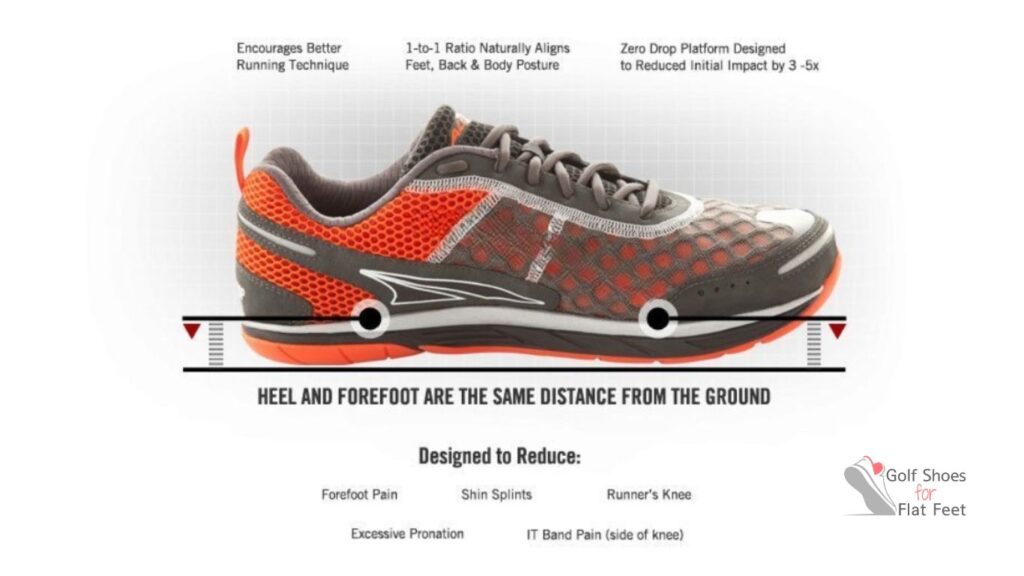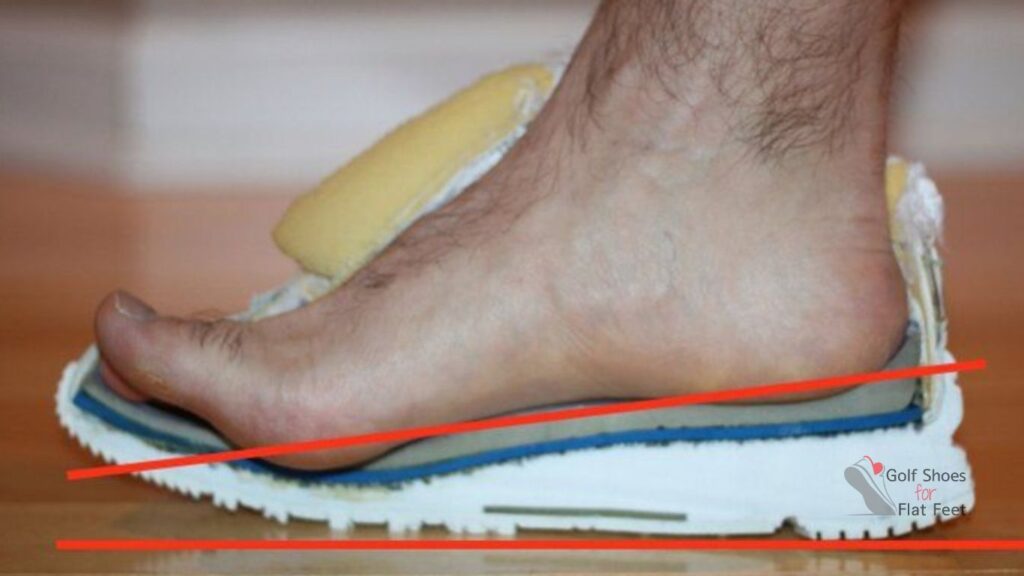People with flat feet often struggle to find shoes that are comfortable and supportive. Flat feet require less drop from the heel to the toe, otherwise known as a “zero drop” shoe. But are zero drop shoes good for flat feet?
Zero-drop or minimalist shoes can be a great option for flat-foot people. They provide less cushioning than traditional running shoes to promote a more natural gait and improved posture. Let’s look at the pros and cons of wearing zero-drop shoes for flat feet.
What is zero drop shoe?
Zero-drop shoes have no difference in height between the forefoot and heel. These shoes are designed to encourage a more neutral posture and promote the body’s natural movement while walking or running. This type of shoe can be great for people with flat feet and those looking to strengthen their arches, as it encourages the foot to remain in its natural alignment.

The lack of cushioning and arch support in shoes zero drop helps to strengthen the muscles in the arch of your foot. This can help alleviate pain caused by flat feet, as well as improve posture and balance. Additionally, the lower heel-to-toe drop increases stability and reduces stress on your feet, ankles, knees, and hips. This can help to prevent injury and reduce fatigue.
Benefits of Zero Drop Shoes for Flat Feet
Let’s look at the advantages of wearing zero-drop shoes for flat feet:
Improved posture
If you have flat feet, zero-drop shoes can help your posture and keep your spine in better alignment. By wearing a pair of shoes with zero drops, your foot is in a natural position, with the heel and forefoot equidistant from the ground.
This helps to keep your foot in the correct position and will ensure that your spine isn’t out of alignment. Having a better posture can help reduce back pain and stiffness. Plus, it’ll make you look more confident when standing up straight.
Reduces stress on the lower back and ankles
The stress on your lower back and ankles can be reduced when you wear no drop shoes. Your feet are naturally in a more balanced position, which helps to distribute your weight more evenly. This can reduce the amount of strain on your ankles, as well as lessen the pressure on your lower back.
For someone with flat feet, having a more balanced stance will also help reduce fatigue and soreness in the lower body. You can stand or walk for longer periods without feeling the strain.
Enhances leg strength and stability
Wearing zero heel drop shoes also helps to enhance the strength and stability of your legs. With flat feet, you often struggle with weak ankles that can give way easily. However, when you wear zero-drop shoes, your feet are in the correct position, and your lower body is better supported. This helps to build strength in your ankles and legs, allowing you to move with more stability.
Furthermore, the extra support provided by the shoes can help to improve your balance. You’ll be able to move with greater agility and coordination, which can help reduce your risk of falls and other injuries.
Improves balance and agility
Better balance and agility are major benefits of wearing zero-drop running shoes for flat feet. Moving with greater coordination and control will make it easier to complete everyday activities. You’ll be able to walk and run with greater confidence, as well as participate in activities like sports or dancing without worrying about falling.
Zero drop shoes with arch support can also help to reduce your risk of injuries. Better balance and stability in your lower body will help you keep your footing, even on slippery surfaces or running at high speeds. With zero drop running shoes, you’ll be able to move safely and confidently.

Cons of Zero Drop Shoes for Flat Feet
While there are many benefits to wearing zero-drop shoes for flat feet, there are also some potential drawbacks to consider:
Can increase the risk of ankle injuries
Wearing zero-drop shoes can increase the risk of ankle injuries, especially if you’re not used to them. Your ankles have adapted to wearing traditional shoes with a heel drop and may not be ready for the change. It’s important to transition slowly so your ankles can adjust to the new shoes.
If you rush into wearing them, your ankles may not be able to handle the new position and can become strained or injured. Additionally, if you have weak ankles already, the shoes may not provide enough support and stability for them to function properly.
The initial transition period can be uncomfortable:
Another con of zero-drop shoes is that the initial transition to zero drop shoes can be uncomfortable. Your feet may take some time to get used to being in a more natural position. You may experience discomfort or soreness while wearing the shoes during the adjustment period.
It’s important to go slow and give yourself ample time to adjust. Wear the shoes for shorter periods, gradually increasing the time you wear them. This will help your feet get used to the new position without overwhelming them.
Breathability and comfort may be impacted
Finally, the breathability and comfort of your shoes may be impacted when you switch to zero-drop style. Traditional shoes usually have more cushioning and padding, which can provide additional comfort. Zero-drop shoes don’t have the same cushioning, so they may not feel as comfortable.
Additionally, some zero-drop shoes may not be as breathable as traditional shoes. This can make them more prone to developing odors and staining. It’s important to look for shoes with good breathability and cushioning to enjoy the benefits of zero-drop shoes without sacrificing comfort.
Alternatives to Zero Drop Shoes for Flat Feet
If you’re not ready to make the switch to zero-drop shoes, there are other options available:
Orthotic inserts
Orthotic inserts are a great way to help correct your posture and relieve pressure on your feet. They are designed to fit into your shoes and provide additional support and cushioning. This can help to improve your stance and make walking and running more comfortable.
The inserts can also help to reduce the pain associated with flat feet. They provide extra cushioning and support to the arch of your foot, which can help to reduce the strain on your ankles and lower back.
Stabilizing shoes with good arch support
Stabilizing shoes are another option for people with flat feet. These shoes are designed to provide extra support and cushioning in the arch area, which can help reduce the strain on your feet. The extra stability and cushioning can also help to reduce fatigue and discomfort.
These shoes may also provide additional motion control, which can help with flat feet. The extra support and motion control can help to keep your feet in a balanced position and reduce the risk of injury.
Motion-control running shoes
If you’re an avid runner, you may want to consider motion-control running shoes. These shoes provide extra stability and support for your feet while you run. They help to keep your feet in the correct position and prevent them from rolling inward.
This can help to reduce the strain on your feet, ankles, and lower back. Motion-control running shoes also provide additional cushioning for your feet, which can help to reduce the impact of running.
Shoes with a cushioned heel
Cushioned heel shoes are another option for people with flat feet. The extra cushioning in the heel area can help to reduce the impact on your feet when you walk or run. It can also help to provide extra support and stability for your feet, which can reduce the risk of injury.
The cushioning in the heel area can also help to reduce the strain on your feet and ankles. This can help to make walking and running more comfortable and reduce the pain associated with flat feet.
No matter what shoe you choose, ensure it fits properly and provides enough support for your feet.

Frequently Asked Questions:
The main appeal of zero-drop shoes is that they provide a more natural experience for the wearer. They help reduce fatigue and discomfort, as well as provide a flat base which proponents of a natural running advocate. For flat feet, zero-drop shoes can help provide better balance while walking or running.
In general, zero drop shoes should not cause heel pain as they provide a more natural foot strike. However, if someone with flat feet is wearing a too-stiff or too-flexible shoe, it could cause heel pain. It’s generally recommended to wear shoes that are designed specifically for flat feet to avoid any potential issues.
Yes, many zero-drop shoes are designed with arch support in mind. Many of them feature a raised heel which helps to cushion the foot and provide better balance. Additionally, some manufacturers offer insoles that can be added to the shoe for extra arch support.
A minimal surgery or orthotic device may be recommended for those with significantly flat feet. Non-surgical options include stretching exercises and special shoe inserts designed to help realign the foot and provide arch support. Additionally, wearing proper supportive shoes designed for flat feet can help provide relief and support.
Walking barefoot on a flat, supportive surface can help stretch and strengthen the muscles and ligaments of the feet. This can help reduce excessive flattening of the arches. However, it’s not recommended to walk barefoot on hard surfaces like concrete or asphalt, as this can exacerbate any existing problems.
Conclusion
So, are zero drop shoes good for flat feet? If you’re looking for a shoe with a flat sole to support your arch, then zero-drop shoes may be the best fit for you. While they may not be the best in terms of cushioning or stability, they do offer an even surface to help reduce pressure points and reduce foot fatigue.
Ultimately, the best way to determine if a zero-drop shoe is right for you is to try them out and see how your feet feel in them. With the right combination of comfort, support, and stability, you’ll be able to find a pair that works for your unique needs.